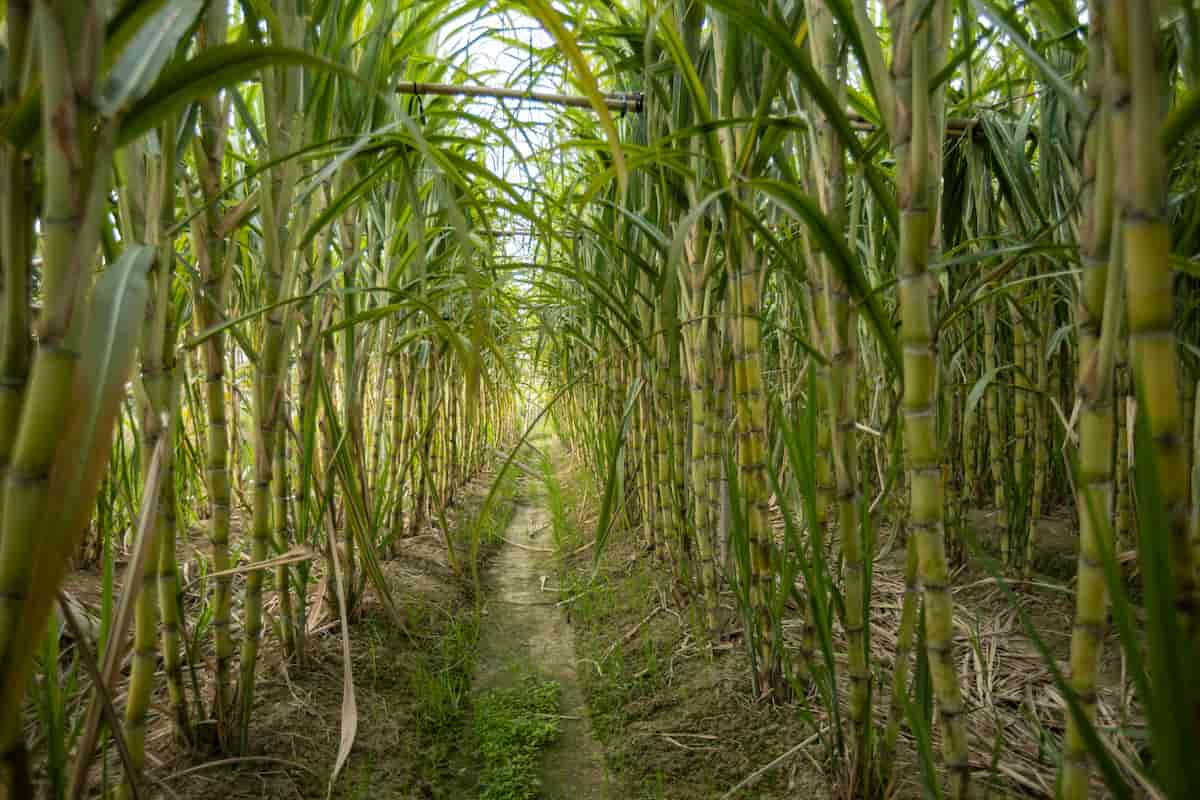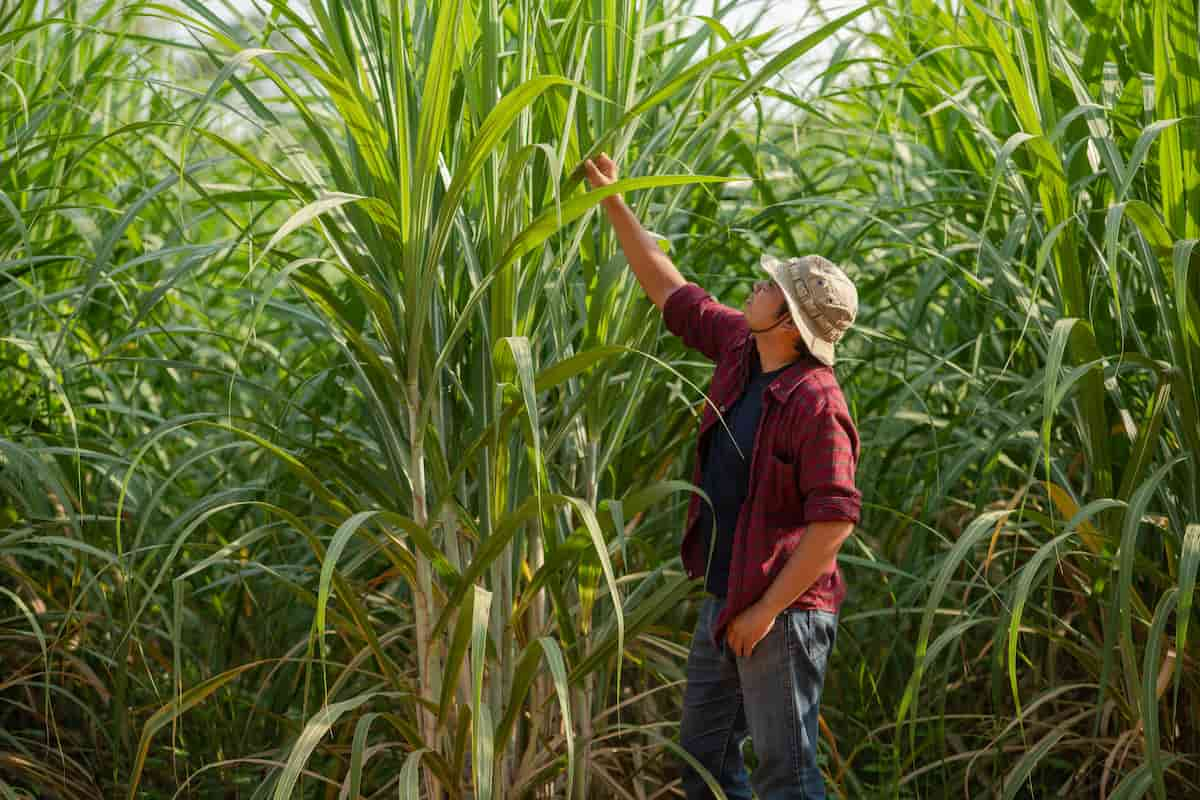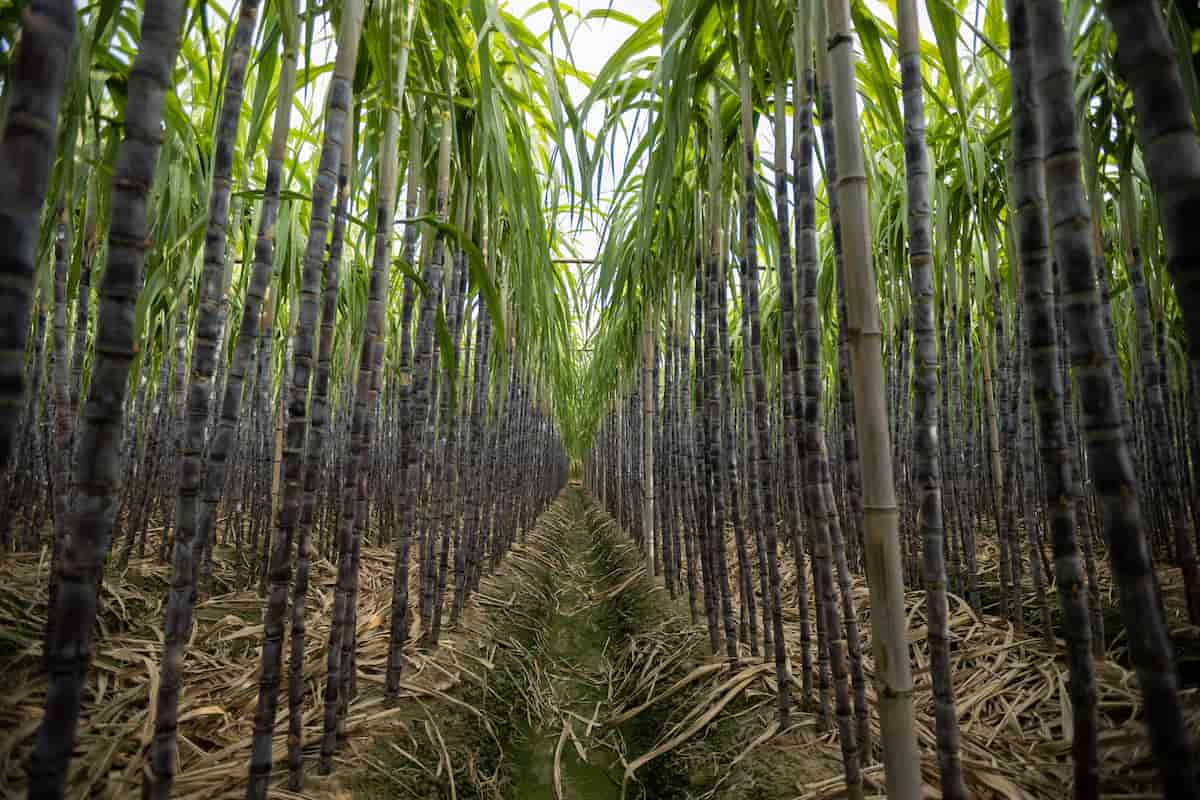Sugarcane is an important cash crop with high demand worldwide. However, its successful cultivation requires proper planning and management. This blog post will provide a comprehensive guide to sugarcane production, covering step-by-step cultivation practices.

From selecting the right cultivar, land preparation, planting, fertilization, irrigation, weed, pest, and disease management, to harvesting and post-harvest practices, we will share the best practices and techniques to help farmers optimize their yields and profitability. Whether you are an experienced sugarcane grower or just starting, this guide will provide valuable insights and actionable tips to improve your production.
Sugarcane Production Guide
Different Sowing Methods of Sugarcane
Sugarcane can be planted using various methods, depending on factors such as soil and climate conditions, moisture levels, labor availability, and the level of mechanization. These methods should be chosen based on the specific conditions of the plantation.
| Planting Method | Description | Spacing | Depth | Fertilizer Application |
| Ridge and Furrow | Commonly used in Nepal, either tractor or bullock-drawn ridges/furrows | 60-135 cm | 25 cm | Applied and mixed with soil |
| Flatbed | Setts planted on leveled flat land at a row to row distance of 75-90 cm | 75-90 cm | 5 cm | DAP, Potash, and urea mixed with soil or top-dressed later |
| Trench | U-shaped furrows/trenches of 25-30 cm depth made for planting, suitable for heavy clay soil | 75-120 cm | 10-15 cm | Applied and mixed with soil |
| Deep Trench | Deep trenches of depth 30-45 cm and width 60 cm were manually dug, suitable for drought and late waterlogged conditions | 120 cm | slightly covered with soil | Applied and mixed with soil |
| Ring or Pit | Circular pits of 90 cm diameter encourages growth of mother shoots and suppresses tillers | 60 cm on one side and 90 cm on another side | 45 cm | FYM mixed with soil, Aldrin, urea, DAP, and Potash applied |
Best Package and Practices of Sugarcane High Production
Sugarcane farmers who use the finest package and methods receive higher yields and profits. Some of these are choosing a suitable type, planting in soils with good drainage, watering and fertilizing as needed, keeping unwanted plants at bay, protecting your crop from insects and diseases, and harvesting at the optimal time.
In addition, using biocontrol agents can lessen dependence on chemical pesticides, and intercropping sugarcane with legumes can boost soil fertility. High yields and the long-term viability of sugarcane cultivation are both possible outcomes if producers adopt these best practices.
Field/Land Preparation for Crop
Clear the land, plough, or harrow, prepare raised beds, apply organic manure and inorganic fertilizers, and level the land
Tillage
Two to three ploughings followed by the harrowing, formation of flatbeds/ridges and furrows/pits
Varieties
- Early maturing: Co 6907, Co 7804, Co T 8201, Co 8013, Co 8014, CoC 671, 83R23, 87A298, 88A189, 90A272, 91V83, 93V297, 83R23, 90R5, 93A145 (Sarada), 2000V59 (Swathi), 2005V46 (Bharani), 97A85 (Visakha).
- Mid-late maturing: Co 62175, Co 7219, CoA 7802, 87A380, 87A397, 88A162, 93A21, 94A109, 96A136, 89V74.
Temperature, Climatic, and Rainfall requirements for Crop Cultivation
- Temperature: 20-35°C
- Annual rainfall: 1000-1500 mm
- Humidity: 70-75%
Propagation of Crop
Propagation through stem cuttings, Sugarcane setts
Seed Rate And Sowing Method for Crop Cultivation
Plant the stem cuttings in the furrows with 2-3 buds and cover them with soil. Recommended seed rate is 30,000 to 40,000 three-budded setts per ha, At 90 cm row-to-row spacing and 12 setts /meter long row, the seed requirement per acre would be 35-45 quintals.
In case you missed it: How to Grow Snake Gourd from Seeds in Pots: A Step-By-Step Home Garden Guide for Beginners

Seed Treatment for Crop
Treat the seed cane with fungicides like carbendazim or trimorph before planting
Earthing Up and Propping
Earthing up should be done before monsoon onset at the crop age of 3-4 months to check excessive tillering and weed growth besides facilitating irrigation, a well-grown crop needs propping against lodging.
Manure and Fertilizer Applications and Scheduling in Crop
- Apply 25-30 tons of organic manure per hectare.
- Apply inorganic fertilizers in split doses, 50% at planting and 50% at 60 days after planting.
- Average NPK recommended Dose 110-160 N + 100 P2O5 + 130 K2O kg/ha. The entire dose of P and K should be applied and incorporated into the soil during final land preparation.
- Nitrogen should be applied in two equal splits at 45 and 90 DAS.
Weed Control/Methods in Crop
Apply pre-emergence herbicides like atrazine or pendimethalin before planting; Apply post-emergence herbicides like glyphosate or paraquat to control weeds in case of heavy infestation; Regular hoeing and cultivation to control weeds during the crop’s growing season.
First, 90-100 DAS is considered as the critical period, three inter-cultivation (30, 60, 90 DAS) with blade harrows/local implements appear economical. Otherwise, three manual weedings are necessary for checking weed growth. Among the herbicides, PRE spray of Atrazine followed by 2,4-D 60 DAS is the most common weed management method.
Different Cropping Systems and Intercropping in Crop
- Sole cropping: Growing sugarcane as a sole crop, with or without ratoon crop;
- Intercropping: Growing sugarcane in combination with other crops like legumes, vegetables, or cereals;
- Mixed cropping: Growing sugarcane along with other crops like banana, papaya, or citrus for additional income and ecological sustainability
Irrigation Methods and Irrigation Scheduling in Crop
Tillering, grand growth period and early ripening period are more sensitive to soil moisture stress, irrigation frequency varies according to the region and rainfall, a drying-off period of 4-6 weeks before harvest has to be allowed, and waterlogging should be avoided. Irrigation at regular intervals of 7-10 days, depending on soil and weather conditions; Use of drip or sprinkler irrigation system; Application of water based on crop evapotranspiration (ET) rate.
List Diseases and Control methods in Crop
- Major sugarcane diseases are Red rot, Smut, Pokkah boeng, Ratoon stunting disease, Brown stripe downy mildew, Yellow leaf virus, Gumming disease, Leaf scald, Grassy shoot, and Sugarcane mosaic virus.
- Use of healthy and disease-free seed material for planting.
- Regular field sanitation practices.
- Application of fungicides to control fungal diseases.
- Adoption of resistant varieties.
List Pest and Control methods in Crop
- Major pests of Sugarcane are Aphid, Early shoot borer, Top borer, Root borer, White grubs, Termites, Scale insects, Mealybugs, Armyworms, and Cutworms.
- Regular field scouting and monitoring.
- Application of insecticides to control insect pests.
- Biological control measures; Use of trap crops to attract and control pests .
Ratoon Sugarcane Crop
Early maturing varieties are poor ratoons than mid-late or late varieties. Varieties with high yields as crop
In case you missed it: How to Start a Broom Production in India: A Profitable Agriculture Business

Harvesting and Threshing in Crop
- Harvesting of the mature Crop using a cane knife or mechanical harvester.
- Removal of the leafy top portion of the cane before transport to the mill.
- Threshing of the harvested cane to extract the juice using mechanical crushers or rollers.
Yield per Acre
The average sugarcane yield is around 70-100 tons per hectare, potentially reaching up to 150 tons per hectare with good management practices. The average and expected quantity of yield per acre is 20-35 tonnes.
Conclusion
Sugarcane cultivation is a complex process that requires careful planning, preparation, and execution. Following step-by-step cultivation practices can ensure successful sugarcane production with good yields. Proper land preparation, selection of high-quality seed material, and time management practices can help farmers achieve a profitable sugarcane harvest.
- Feed Your Flock for Less: Top 10 Tips to Save on Chicken Feed
- Ultimate Guide to Ossabaw Island Hog: Breeding, Raising, Diet, and Care
- Hatching Answers: The Top 10 Reasons Your Chickens Aren’t Laying Eggs
- Eggs and Economics: Breaking Down the Cost of Raising Backyard Chickens
- Defend Your Greens: Proven Methods to Keep Iguanas Out of Your Garden
- Ultimate Guide to Cinnamon Queen Chicken: A Comprehensive Guide for Beginners
- Ultimate Guide to California Tan Chicken: Breeding, Raising, Diet, Egg-Production and Care
- Ultimate Guide to Marsh Daisy Chicken: Breeding, Raising, Diet, and Care
- 10 Types of Chicken Farming Businesses You Can Start for Profits